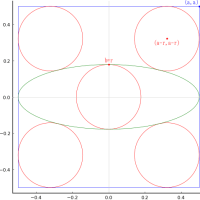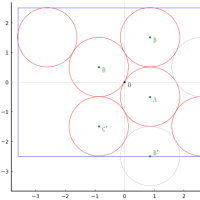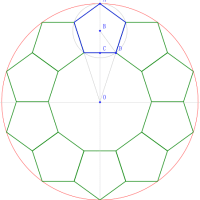配列の連接 cat(), vcat(), hcat()
vcat() は第 1 次元で cat()
julia> a = [1 2 3 4 5]
1×5 Array{Int64,2}:
1 2 3 4 5
julia> b = [6 7 8 9 10; 11 12 13 14 15]
2×5 Array{Int64,2}:
6 7 8 9 10
11 12 13 14 15
julia> vcat(a,b)
3×5 Array{Int64,2}:
1 2 3 4 5
6 7 8 9 10
11 12 13 14 15
julia> c = ([1 2 3], [4 5 6])
([1 2 3], [4 5 6])
julia> vcat(c...)
2×3 Array{Int64,2}:
1 2 3
4 5 6
hcat() は第 2 次元で cat()
julia> a = [1; 2; 3; 4; 5]
5-element Array{Int64,1}:
1
2
3
4
5
julia> b = [6 7; 8 9; 10 11; 12 13; 14 15]
5×2 Array{Int64,2}:
6 7
8 9
10 11
12 13
14 15
julia> hcat(a,b)
5×3 Array{Int64,2}:
1 6 7
2 8 9
3 10 11
4 12 13
5 14 15
julia> c = ([1; 2; 3], [4; 5; 6])
([1, 2, 3], [4, 5, 6])
julia> hcat(c...)
3×2 Array{Int64,2}:
1 4
2 5
3 6
julia> x = Matrix(undef, 3, 0) # x = [] would have created an Array{Any, 1}, but need an Array{Any, 2}
3×0 Array{Any,2}
julia> hcat(x, [1; 2; 3])
3×1 Array{Any,2}:
1
2
3
hvcat() は hcat() と vcat() を 1 回のコールで行う。
julia> a, b, c, d, e, f = 1, 2, 3, 4, 5, 6
(1, 2, 3, 4, 5, 6)
julia> [a b c; d e f]
2×3 Array{Int64,2}:
1 2 3
4 5 6
julia> hvcat((3,3), a,b,c,d,e,f)
2×3 Array{Int64,2}:
1 2 3
4 5 6
julia> [a b;c d; e f]
3×2 Array{Int64,2}:
1 2
3 4
5 6
julia> hvcat((2,2,2), a,b,c,d,e,f)
3×2 Array{Int64,2}:
1 2
3 4
5 6
ベクトルを作る vect(X...)
julia> a = Base.vect(UInt8(1), 2.5, 1//2)
3-element Array{Float64,1}:
1.0
2.5
0.5
ローテート circshift(A, shift),circshift!(dest, src, shifts)
shift はタプルまたはベクトル。それぞれの次元でどれだけシフトするかの量を表す。正・負・ゼロの値を取る。
circshift! は結果を dest に格納する。
julia> b = reshape(Vector(1:16), (4,4))
4×4 Array{Int64,2}:
1 5 9 13
2 6 10 14
3 7 11 15
4 8 12 16
julia> circshift(b, (0,2))
4×4 Array{Int64,2}:
9 13 1 5
10 14 2 6
11 15 3 7
12 16 4 8
julia> circshift(b, (-1,0))
4×4 Array{Int64,2}:
2 6 10 14
3 7 11 15
4 8 12 16
1 5 9 13
julia> a = BitArray([true, true, false, false, true])
5-element BitArray{1}:
1
1
0
0
1
julia> circshift(a, 1)
5-element BitArray{1}:
1
1
1
0
0
julia> circshift(a, -1)
5-element BitArray{1}:
1
0
0
1
1
julia> src = reshape(Vector(1:16), (4,4))
4×4 Array{Int64,2}:
1 5 9 13
2 6 10 14
3 7 11 15
4 8 12 16
julia> dest = OffsetArray{Int}(undef, (0:3,2:5))
julia> circcopy!(dest, src)
OffsetArrays.OffsetArray{Int64,2,Array{Int64,2}} with indices 0:3×2:5:
8 12 16 4
5 9 13 1
6 10 14 2
7 11 15 3
julia> dest[1:3,2:4] == src[1:3,2:4]
true




























※コメント投稿者のブログIDはブログ作成者のみに通知されます